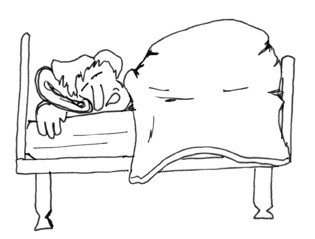Bed bugs plague our inner city
Buildings and tenants stigmatized by unfair media coverage
Moving into a new building in central Winnipeg comes with the usual headaches of landlords and drafty windows and bikes stolen off your front lawn. But every spring we are faced with something much worse: a veritable infestation of bed bugs.
Bed bugs do not discriminate in their choice of home, but happen to be rampant in multi-tenant complexes and apartment buildings. This is why they are dangerous to our more densely-populated areas, such as some parts of the inner city.
Last week the Winnipeg Free Press reported a Manitoba Housing Authority (MHA) high-rise in Osborne Village is attempting to eradicate an infestation so massive it is using the entire pest-control budget for the year for the one building: a sum of $65,000.
Bed bugs attach a stigma to the buildings in which they are found. And rightly so – the bugs are almost impossible to get rid of and unless buildings are completely fumigated along with all furniture and fabrics, another outbreak is easily possible.
Many of us, upon discovering our building faces total fumigation for a bed bug plague, would seriously consider moving out. But not everyone has that option. Manitoba Housing Authority has long battled bed bug problems in its housing complexes. Whenever we do read about infestations, reporters often are careful to note whether or not the building is operated by MHA.
But commenting on this has a serious implication for the people living in these buildings. MHA provides subsidized housing to low-income people. This means that tenants pay rent directly according to what they make – this year’s number is somewhere in the avenue of 27 per cent. When a bed bug infestation breaks out in one of these complexes, people who are already paying subsidized housing rarely have the opportunity to request a transfer, and have an even smaller chance of finding an affordable place on their own. Furthermore, any landlord must stop and consider an application where the previous residence was reported in the newspaper as having a bed bug infestation.
Buildings such as this usually have a pest-control budget – but what happens if and when that runs out? And what happens in privately-owned buildings when a landlord does not budget for this and may refuse to act?
Bed bugs have become an inner city plight. We associate them with dirty buildings and lifestyles regardless of the fact that expensive hotels can get them too (not that any reports of those infestations get out). Due to this, it is too easy to turn a blind eye to the people and buildings suffering from them, or to simply condemn them.
We cannot allow ourselves to put up with this attitude. MHA may have an obligation to its tenants to allow them to live in clean buildings, but the government has an obligation to give MHA the funding it needs to make a real impact on this problem. So that leaves it to us to convince the government that this is an issue that needs addressing.
It is impossible to live safely or comfortably in a bug-infested dwelling, whether your landlord is a government agency or a private person.
Published in Volume 63, Number 23 of The Uniter (March 12, 2009)







